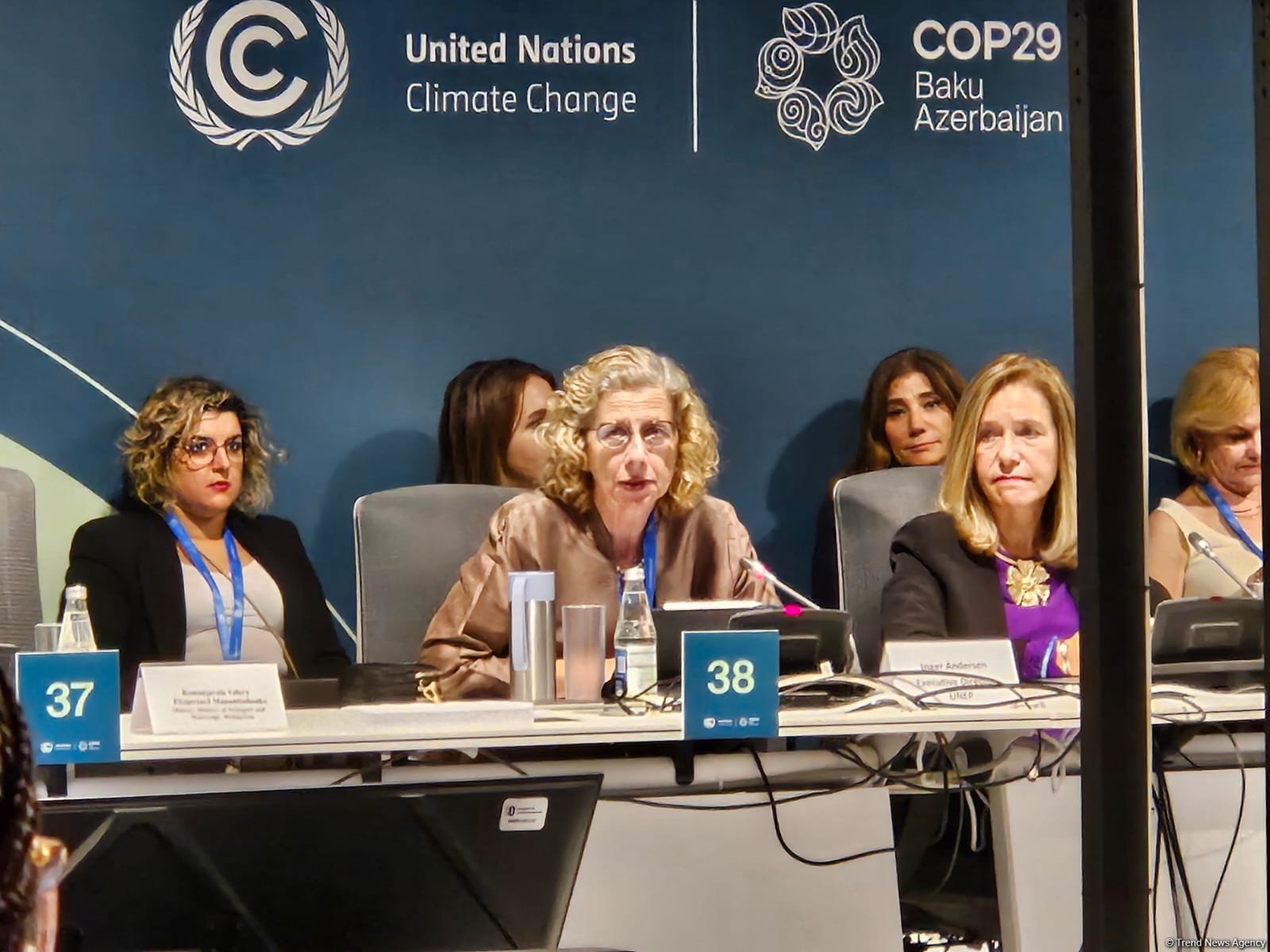BAKU, Azerbaijan, November 16. CO2 emissions need to be reduced by 41 percent by 2030 to maintain the goal of limiting global warming to 1.5 degrees Celsius, Executive Director of the United Nations Environment Program (UNEP) Inger Andersen said at the COP29 high-level event on Strengthening Climate Information and Multi-Hazard Early Warning Systems for Increased Resilience today, Trend reports.
"CO2 emissions continue to rise rather than decrease. This is not what we would like to see. Last year, we recorded a 1.3 percent increase in emissions, whereas we should have seen a double-digit decrease. If we continue down this path, we will be moving in the wrong direction," she explained.
According to her, 57 gigatons of carbon dioxide are emitted annually. If we take into account the remaining emissions budget, there are only 200 gigatons left, while the climate action debt will only grow, leading to more intense climate disasters and greater damage.
"The consequences of climate change will be particularly severe for small island developing states (SIDS), low-lying countries, and landlocked nations. We urgently need to increase investments in early warning systems, as even if we take action now, we are already behind, and the consequences will be even more destructive," Andersen emphasized.
To note, the 29th session of the Conference of the Parties to the UN Framework Convention on Climate Change (COP29), which will run until November 22, opened at the Baku Olympic Stadium on November 11. It is the largest event organized by Azerbaijan to date and the first time in the region that it is being held in Azerbaijan.
Within COP29, the highest-level event - the summit of world leaders on climate action - was held on November 12–13.
The main expectation from COP29 is to agree on a fair and ambitious New Collective Quantitative Goal (NCQG) on climate finance. The COP29 chairmanship has launched 14 initiatives that include linkages between climate action and the Sustainable Development Goals, including green energy corridors, green energy storage, harmony for climate resilience, clean hydrogen, methane reduction in organic waste, action on green digital technologies, and other topics.
In addition to being a top priority that creates the conditions for action, creating climate finance will also help fulfill the 1.5°C pledge by bringing everyone together.
The UN Framework Convention on Climate Change is an agreement signed at the Rio Earth Summit in June 1992 to prevent dangerous human interference in the climate system. The acronym COP (Conference of Parties) stands for “Conference of Parties” and is the highest legislative body overseeing the implementation of the Framework Convention on Climate Change.
A total of 198 countries are parties to the Convention. Unless otherwise decided by the parties, COP is held annually. The first COP event was held in March 1995 in Berlin, and its secretariat is located in Bonn.
Stay up-to-date with more news on Trend News Agency's WhatsApp channel







